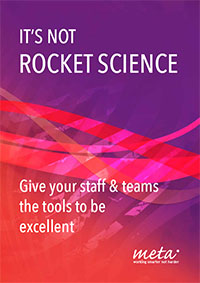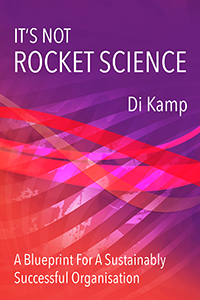Do you love your work?
I ask that question every time I have a new group. I tell them it’s a challenging question, but what’s interesting is that almost everyone finds something that they love.
It might be the team colleagues that they work with, it might be that they do something that supports or helps others in the organisation, it might be that they love the challenge, that no two days are the same, or that they have an enlightened boss who is a great leader to work for – there are many different things to love about almost ANY role.
I remember when I was younger working in retail. I used to work in the formal wear department of a large clothing store in the west end of London. I loved selling suits. I loved finding someone that special suit and shirt and tie combo that would make them stand out from the crowd. I loved serving people, finding what was just right for them. I also loved to create the displays, matching ties to formal shirts, and shirts to suits – it allowed my artistic creativity to come through. I rose through the ranks until I ran my own formal wear department and then I loved sharing my love of suits and I loved mentoring and sharing my knowledge with the new staff members. I took a pride in my work and although the work wasn’t particularly amazing and I knew it wasn’t my life’s vocation, I made it work for me, by deciding to find things that I could love about it.
As soon as you mention the word LOVE and business in the same sentence you can literally hear and see people switch off. Oh boy, here we go – more hippy stuff; he’ll be talking about hugging trees next!
Actually no, it’s about time that we did bring the word LOVE back into the workplace. Most people don’t work just for the money; they need something more purposeful than just money to stick at a job. So if work has got a bit boring for you, or you feel that you’re stuck in a bit of a career rut, now’s the time to start noticing what you LOVE about your job, what you enjoy doing, what makes you feel that what you do is worthwhile.
Over the past 17 years of doing this work, I’ve come to realise that people love the strangest things! Some people LOVE the pressure of a full-on work day, some people LOVE proving people wrong, some people love to be challenged, some people love punching in code. Some people love doing something that makes a difference, some people love filling out excel files with data, some people love to be strategic, some people love to support and care for those around them. Some people love the fact that they have no idea what to expect when they arrive in the morning, some people love the order and repetitive nature of the work they do.
We’re all different, we all love different things.
That’s what makes work, WORK: the fact that we aren’t all automatons and all have different preferences for how we work and what we do.
There is a universal in this though, and that universal is LOVE. If you don’t choose to see what you LOVE, you’ll see what you don’t like, what’s wrong with what you do in your work.
It’s all about what you filter for. Do you filter your work experience in terms of what you love about it or what you don’t like about it? Do you collect the evidence that you hate work or the evidence that you LOVE work? Whatever you look for, will generally be your experience.
So I’m suggesting that in February, the month of LOVE, you change your filter when it comes to your work. How many things can you find that you love about your work? The world is so doom and gloom these days – just turn on the news and there are so many reasons to be fearful, to focus on the negative. I think it’s about time we focussed on those things that we love. It’s time to bring work back into balance.
Call it a re-frame, call it a re-balance or just call it what it is – a reason to be cheerful, a reason to get up and out of bed and go to work in the morning.
Now I’m saying look for the things you LOVE in what you do, but what if you don’t find much, no matter how hard you look? Well, I’m not an idealist, I’m a realist and if you can’t find enough to LOVE then it’s time to find something new, to move on, to create the next chapter in the book of the story of your work-life.
I’m just saying that it’s time to stop looking for what’s wrong and finding that, and start looking for what’s right and find that!
LOVE is one of the greatest motivating factors there is and when you love your work it’s amazing what you can achieve. When you love what you do you can not only deliver, but you deliver at a higher and higher quality. And those things you don’t love? You find creative ways to get around them or reduce their impact, because you know that ultimately you DO love your job, and so you find more and more creative, innovative ways to make it a job you love even more.
So why not write a list about what you LOVE about YOUR work?
Open a file on your desktop, and keep a note of the big and small things that help you to love what you do.
Then when you’re having a bad day, or finding work a real challenge, why not refer back to that list and remind yourself why you do what you do?
LOVE motivates, inspires and brings meaning to everything in our life, so let’s use this month to look for what we love in our work.
Have a wonderful month everyone,
In peace (and love! :P)
Jo
CEO of Meta



